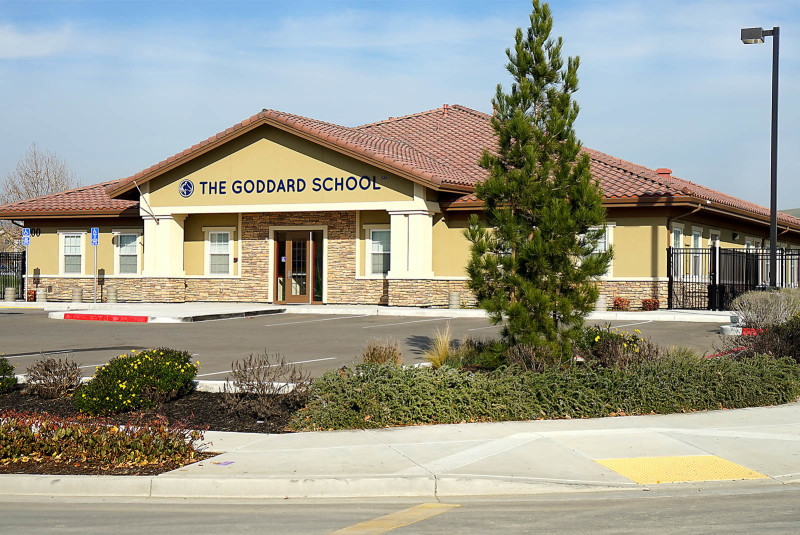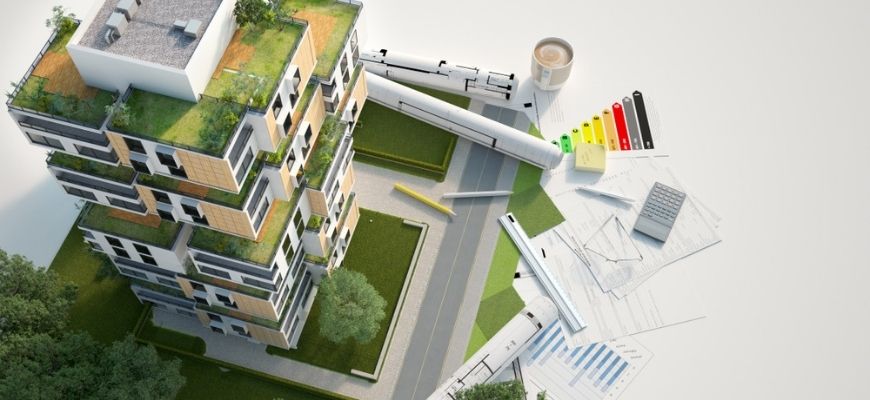The need to guarantee a safe living environment for future generations has necessitated the growing adoption of green solutions in various aspects of everyday life, including construction. Not only does green technology help reduce a building’s carbon footprint, but it also creates highly comfortable and healthier commercial and residential spaces at the lowest energy cost possible. These eco-friendly solutions can be incorporated throughout the lifecycle of a project, from siting and design to construction and maintenance. Here’s a look at the leading environmentally sound technologies used in sustainable building construction.
-
Solar Energy
Solar power can replace non-renewable sources of heat and electricity in a building, such as fossil fuels. A building’s carbon footprint and energy costs are substantially reduced by harnessing sunlight to power electronic appliances and lighting systems. The sun’s warm rays can also be harnessed through the strategic placement of windows to boost indoor comfort during cold seasons like winter.
-
Biodegradable Construction Materials
The use of materials that readily break down without releasing toxins to the environment is increasingly catching on in construction. With green buildings, these sustainable products can be used to create various structural parts like foundations or walls. Organic paints are also a popular option for eco-friendly projects. Any biodegradable waste materials can be safely disposed of without degrading the soil, air, or natural water supply systems.
-
Sustainable Insulation
Green insulation means that eco-friendly materials are used to keep a building’s interior warm in cold weather and cool enough in hot weather. Recycled alternatives are deployed in wall lining systems in place of expensive products. Sustainable options include denim or old newspapers.
-
Smart Appliances
Smart buildings, including homes, can help minimize energy consumption and carbon emissions. They usually incorporate AI-driven systems that control how and when appliances utilize electricity. For example, Smart Grid household machines like dishwashers and laundry equipment rely on computerized controls to save energy and lower electricity bills.
-
Cool Roofing Systems
Cool roofs help reduce the amount of non-renewable fuel you need to use to keep your home or office cool and comfortable. While traditional roofing absorbs more heat from the sun, sustainable roofing reflects the heat away. The sustainable construction technology may comprise reflective paint and special roofing material that absorbs less heat into the building. By minimizing reliance on air conditioning systems, cool roofs reduce dependence on power from carbon-emitting plants.
-
Use of Sustainable Materials
Eco-friendly construction materials play a big role in environmental conservation. With this approach, recycled products that are safe for the environment are used instead of traditional options. Agricultural waste or by-products are some of the most common sources of these green solutions.
-
Net-Zero Energy Buildings
Though zero energy building design is an ambitious goal, it is achievable. The concept entails designing energy-efficient residential or commercial structures that consume as much energy as they generate on-site through renewable means. It is a cost-effective way to reduce the carbon footprint of a home or commercial property, increase energy savings, and boost indoor air quality.
-
Low-Energy Building Design
Construction technology that reduces a building’s energy consumption is environmentally-friendly. It encompasses techniques/solutions such as:
- Use of sustainable materials like wood, which is natural and renewable and has a lower carbon footprint than steel or concrete
- Design that minimizes heat loss by reducing air leakage
- Strategic placement of windows to make the most of natural light (daylighting)
- Insulation techniques
-
Smart Glass
Electrochromic or smart glass is another sustainable construction technology incorporated in window, façade, or curtain wall design. It allows buildings to minimize the amount of HVAC energy used to provide superior indoor air quality and comfort. Smart glass can be electronically manipulated to prevent excess solar heat or radiation from penetrating the building through the window.
-
Water-Efficient Building Design
Green buildings that are water-efficient are designed to minimize the consumption and wastage of water. Techniques that can be employed to achieve this include:
- Dual plumbing, which supplies a site with recycled and potable water
- Repurposing of greywaters, such as from laundry machines or showers, for other uses, such as irrigation or toilet flushing
- Rainwater harvesting
- Installing water-saving plumbing fixtures
-
Eco-Friendly Indoor Environment Construction
Indoor living spaces should be free of health hazards, such as toxic or irritating airborne contaminants. Designers should prioritize construction materials that meet greet safety standards to create sustainable indoor environments. Products made of natural materials such as wood or bamboo are some of the best for superior indoor air quality because they don’t release harmful compounds like lead or vinyl.
-
Wind-Powered Buildings
Like solar power, wind power is a sustainable green building source. It can be incorporated in self-powered buildings that don’t rely on the national grid. One of its most practical applications is skyscrapers on top of which wind turbines can be erected to generate green energy.
-
Compressed Earth Walls
Compressed or rammed earth construction is environmentally sustainable because it uses naturally sourced raw materials. The product comprises gravel or clay and stabilizing agents like concrete, compressed to produce dense, sturdy walls. The key benefits of this green building solution include:
- Reduces a building’s carbon footprint
- Rammed earth blocks can increase a building’s thermal properties and indoor comfort in hot and cold weather
Getting Practical About the Green Building Future
The future of the construction industry, just like many others, is green. While some sustainable building technologies are still under development, you can still leverage today’s best available alternatives to deliver energy-efficient commercial or residential properties.
Better yet, there are cutting-edge tools you can utilize right away to streamline construction processes, cut costs, and optimize resource utilization. Contact us at Proforma Construction to learn more about efficient project design and execution!




